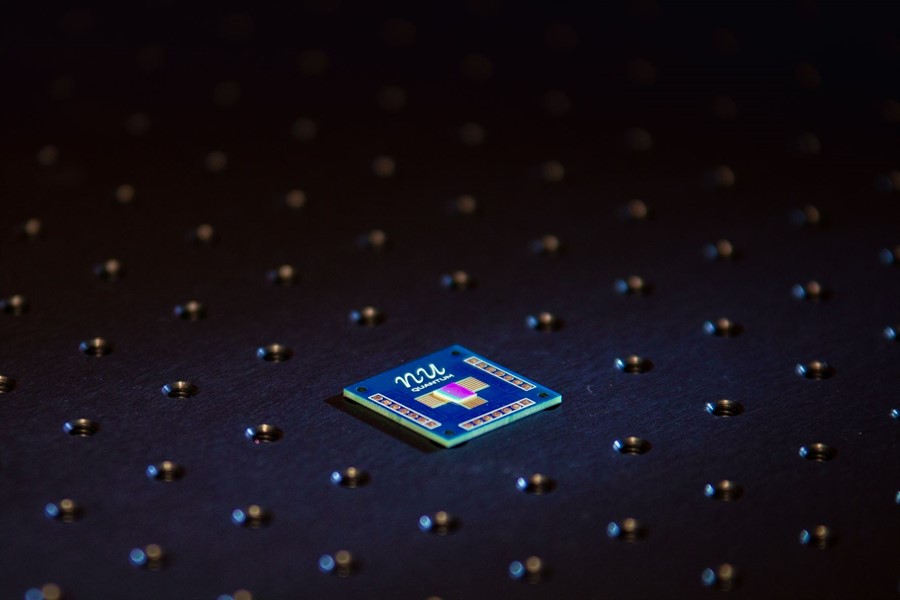Limitless layers, limitless possibilities
Discover the growing potential of graphene and layered materials.
It all began with a chunk of graphite and some sticky tape. Just over 15 years later, this simple – yet adventurous – experiment has led to a vast family of layered materials. Combining them together, like ingredients in a sandwich, opens the door to limitless possibilities.
Graphene is a single layer of carbon atoms, arranged in a hexagonal lattice. Thanks to its peculiar structure, this material exhibits extraordinary properties: it is stronger than steel and even harder than diamond, yet incredibly flexible. Moreover, graphene conducts electricity and heat seamlessly, finding its way into applications from printable electronics and wearable devices to loop-heat pipes: a cooling system used in spacecraft and satellites.
In 2013, the European Commission launched the Graphene Flagship to study its potential and take graphene from the realm of scientific laboratories to the market. Now, after seven years, it has reached cruising speed. The project is stronger than ever – it has created a unique ecosystem that brings together academic institutions, research centres, small companies and leading industries, enabling us to accelerate the time-to-market of graphene and layered materials in an unprecedented manner. Graphene as a technology is mature enough to become part of our lives – and, thanks to the Graphene Flagship’s industry-focused Spearhead Projects, European industry will soon adopt these advances and pioneer the next technological revolution.
New horizons
Beyond graphene, the Graphene Flagship has driven the discovery of thousands of new materials. Some of them, like hexagonal boron nitride, are also strictly two-dimensional and just one-atom thick. Others, on the other hand, have more complicated crystalline arrangements, which makes them slightly thicker: a good example are transition metal dichalcogenides. Therefore, we often talk about layered materials. However thin, we can always obtain layers of these materials and combine them, like different ingredients in a sandwich. These mixtures are known as heterostructures, and open up a world of possibilities. Among many potential applications, these sandwiches of layered materials enabled ultra-sensitive pressure sensors, miniaturised electronics and memory devices and new systems for separation and filtration.
Understanding all of these different materials will enable a future where heterostructures are designed and prepared on demand. Already, thanks to advances accomplished within the Graphene Flagship, scientists can tailor some of these characteristics and properties – and even scale the synthetic conditions for mass production. Drawing from our experts’ understanding of and experience with graphene, our research will continue to expand into the field of layered materials. Graphene Flagship researchers have shown the existence of at least 1800 of these ultrathin layers. Just imagine being able to choose from all of these ingredients!
Here comes the twist!
Beyond just adjusting the composition, altering the angle between the different layers also leads to otherwise unimaginable properties. For instance, two layers of graphene twisted just by 1.1 degrees exhibit superconductivity – a phenomenon that allows flawless electrical conductivity, the free movement of electrons without resistance or heat loss. But slightly modifying this angle leads to completely opposite properties, resulting in total insulation.
This discovery by Massachusetts Institute of Technology’s Pablo Jarillo-Herrero, who was an invited speaker at Graphene Week 2018, inaugurated the field of twistronics: the study of the properties of layered materials and heterostructures when stacked on top of each other, with a little spin. Since then, this field has expanded the horizons of the Graphene Flagship, particularly our Enabling Science and Materials division. Further discoveries also revealed unexpected magnetic and quantum effects that may pave the way to the next generation of computers and electronics.
Graphene – and the Graphene Flagship – are surpassing peoples’ expectations from a few years ago. Thousands of layered materials have been born, new research fields have arisen, and Europe is at the forefront of these new technologies and innovations. All thanks to a tiny piece of tape.

Graphene has many potential applications in fields like electronics and computing. Credit: Nu Quantum




 Click here to learn more.
Click here to learn more.
